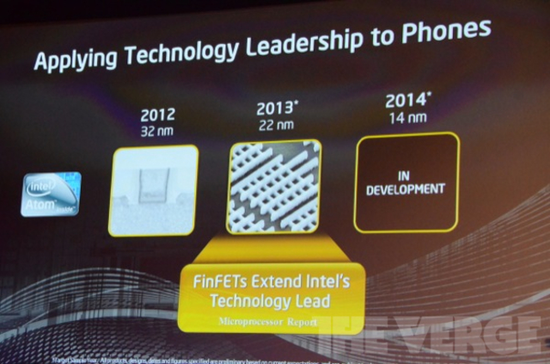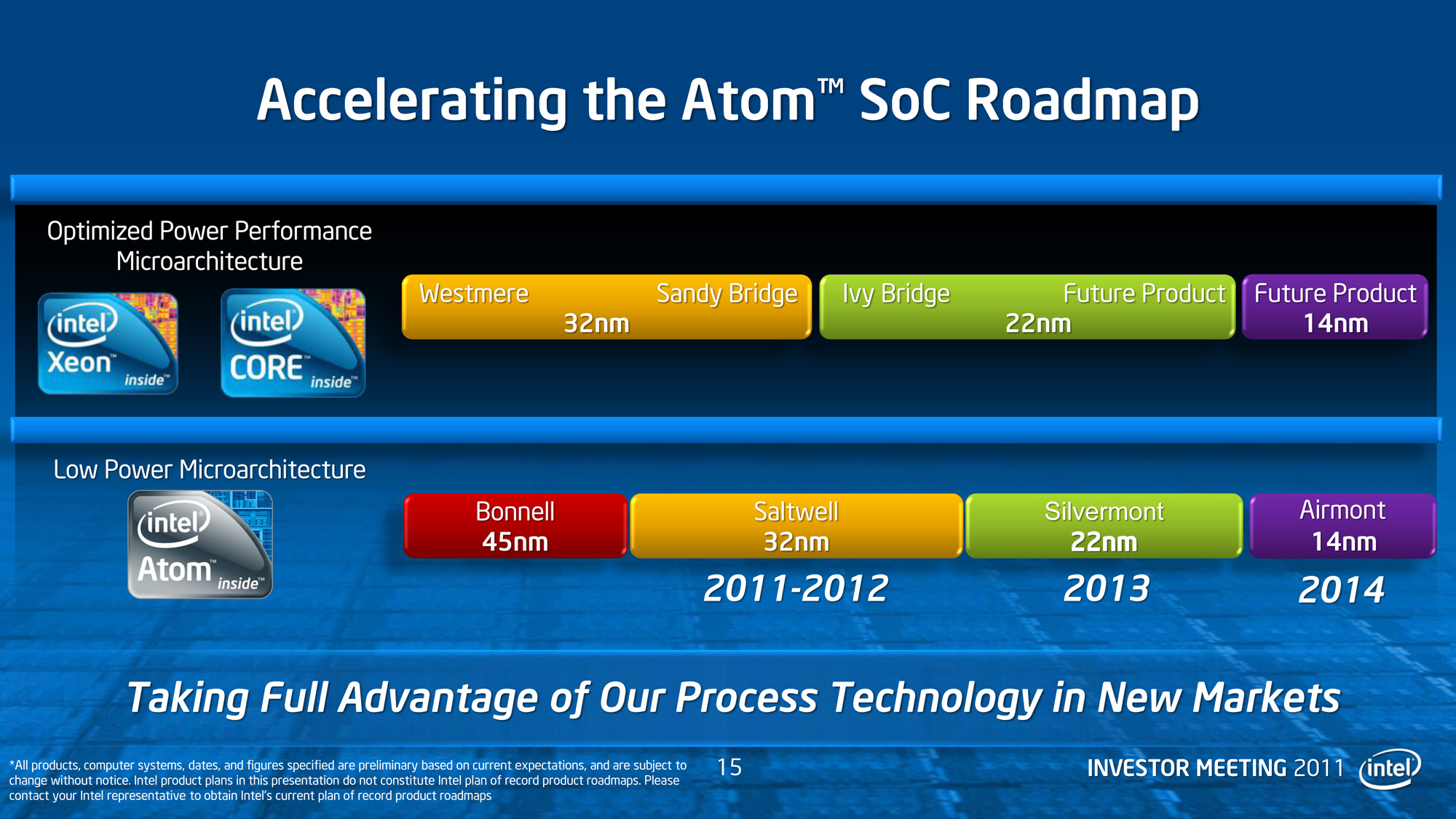Intel has been forced to slow down the Tick-Tock strategy due to problems in the manufacturing of new processors at 22 nanometer. But it promises an aggressive way forward with the Atom architecture for smartphones and will be at 14 nanometer in 2014 already.
Intel had to get its first design wins on the smartphone market to really take a shot at Atom. The company VP, Paul Otellini, have presented quite aggressive roadmaps for its Atom architecture for smartphones. Its Tick-Tock strategy means that a new architecture comes year one, it is then shrunk to a new node in year two and in year three a new architecture on the same node, but this is not the case this time.

Not all products with Atom has been synchronized to these plans. The company has been open with that it needs to reduce energy consumption in these rpoducts, and it will use its world-leading fabs to make sure it can compete with ARM and its partners. The new roadmaps show this commitment, and what we see is most likely one of the most aggressive transitions to new nodes.
In 2013 its Atom processors for smartphones will be shrunk to 22 nanometers with FinFET transistors. The year after it will ship processors for smartphones based on the 14 nanometer node. Sometime during the fast transition Intel will also introduce its new Atom architecture, Silvermont, that will be code-named Airmont at 14 nanometer.
Intel will in just two years have about four times as many transistors to use, compared to today’s 32 nanometer technology that its Medfield us based on. Also lower energy consumption and the possibility to ship even more efficient processors will be in range for the company, which is very important for the market it is trying to break into.
In 2014 Intel will also launch Broadwell at 14 nanometer, which is a shrunk of the Haswell architecture for PCs that arrives in 2013 at 22 nanometer. It is in 2014 that Intel will have processors for PCs and ultramobiles in phase, considering the manufacturing technology. At the same time the rest of the industry is expected to start the transition to 20 nanometer by the end of 2013/early 2014 if all goes as planned.
Source: The Verge
















